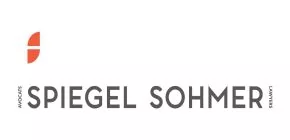Now that the new Canadian Trademarks Act Regulations is in effect, brand owners should be aware of a change in policy concerning the class filing fees should an examined application be divided into additional classes.
Canada now requires that all applications be divided into classes, in accordance with the Nice Classification system.
In Canada, as in most other countries, the Trademarks Office charges a separate per class filing fee, depending on the types of goods and services listed in the trademark application. The government filing fee is now CA$330 for the first class and CA$100 for each additional class.
In other countries, if a Trademark Examiner decides that certain goods or services belong in classes not yet listed in the application, the Examiner may require that additional classes be added. The applicant is then given a choice to either pay a fee for each additional class identified by the examiner or delete/amend the goods or services in issue in order to avoid paying additional class fees.
In Canada, this is not the case. If the Canadian Examiner decides to require additional classes to cover the listed goods and services, the applicant will have no choice but to pay a class fee for each class identified by the Examiner before the application can proceed to advertisement. This is whether or not the applicant decides to maintain or not all such classes in the application! In other words, an applicant will not be able to avoid paying the government fees applicable to the additional classes by simply deleting those goods and services covered by the added classes.
For example: if an applicant files a trademark application in Canada claiming 2 classes, but the examiner determines that the goods and/or services should fall into a total of 7 classes, the applicant will be required to pay addition government filing fees of $500 applicable to the 5 added classes. There is no option to delete goods and/or services to avoid paying the extra $500 in filing fees.
This is unique to Canada.
Consequently, applicants should carefully consider the classification of goods and services before filing and if unsure, should seek direction from their trademark advisers.
The content of this article is intended to provide a general guide to the subject matter. Specialist advice should be sought about your specific circumstances.
We operate a free-to-view policy, asking only that you register in order to read all of our content. Please login or register to view the rest of this article.


